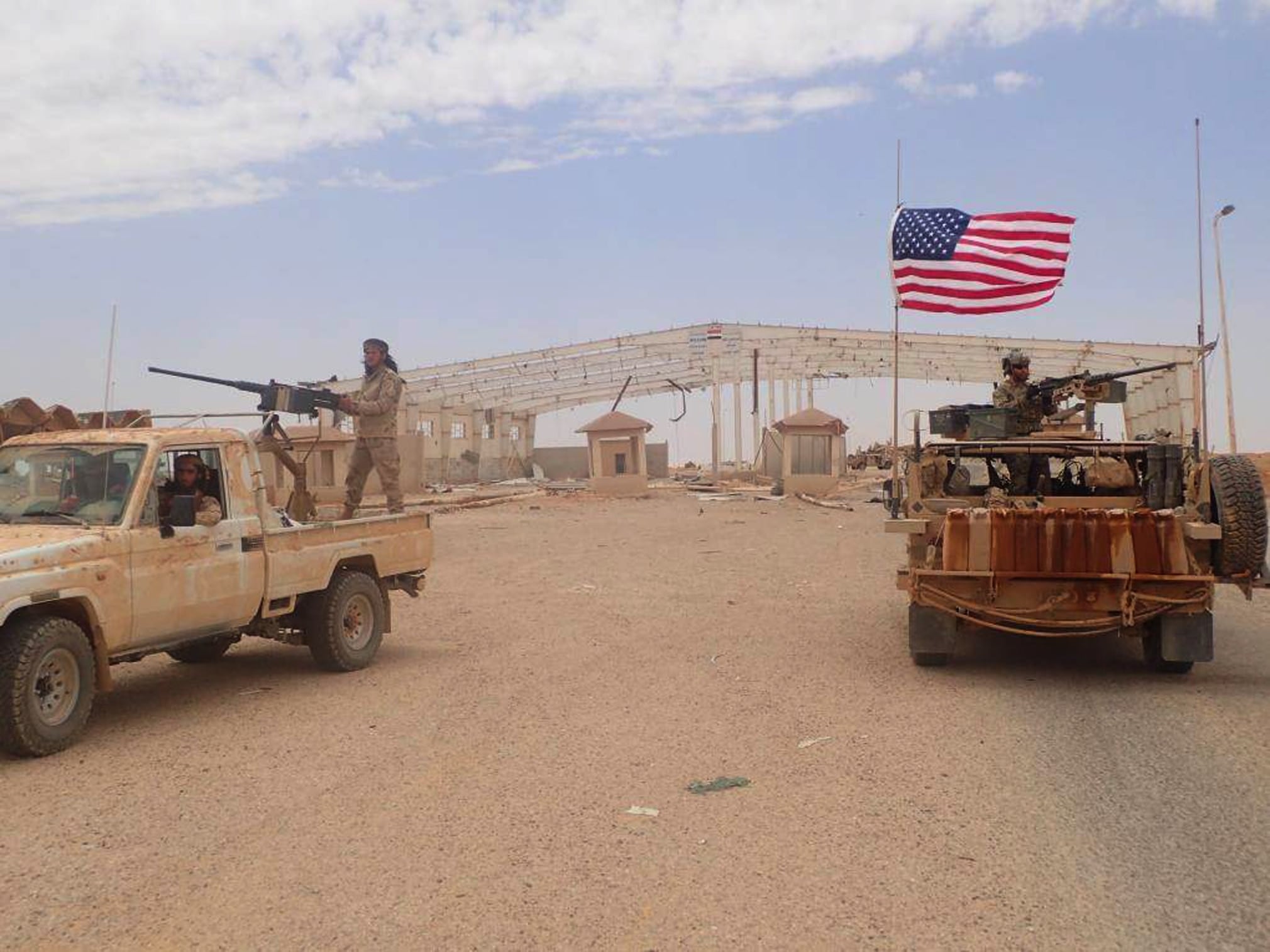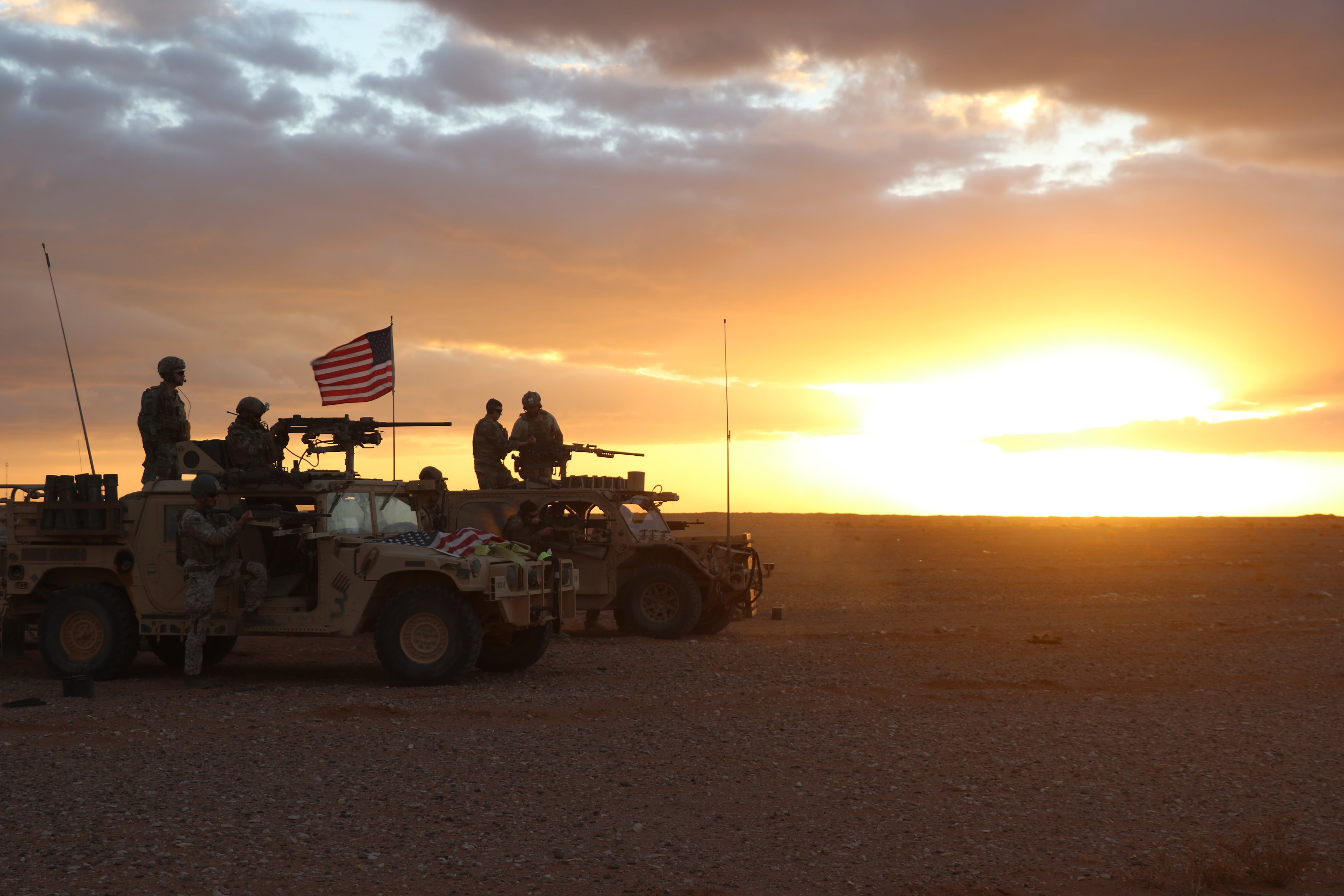A U.S.-backed Syrian partner force said Sunday that an Iranian-backed group launched an attack inside an agreed upon deconfliction zone.
Maghaweir al-Thowra, an anti-ISIS U.S.-backed group, operates out of small garrison near the Iraq border. It tweeted Sunday that an Iran proxy launched an attack against its forces and breached the 55 km deconfliction zone that surrounds a small garrison housing American commandos known as al-Tanf.
The anti-ISIS fighters said that they repelled the attack and that the Syrian regime had lost control of its allies — which the MAT described as a “rogue Iranian proxy.”
MAT also said that Russian warplanes may have targeted the “rogue” group in a series of airstrikes just outside the deconfliction zone.
The two tweets by the U.S.-backed group were liked by Col. Myles B. Caggins III, the spokesman for Operation Inherent Resolve — the U.S.-led mission to defeat ISIS in Iraq and Syria.
Officials with OIR did not say whether U.S. warplanes or rocket artillery assisted the MAT in repelling the attack. OIR told Military Times Sunday that it was monitoring the situation.
“We are closely monitoring reported hostilities around the 55km de-confliction zone in southern Syria. We are coordinating with our partners, the Maghaweir al-Thowra, and using de-confliction protocols to ensure the safety of our forces,” said Maj. Johnny Walker, a spokesman with Special Operations Joint Task Force-Operation Inherent Resolve.
The U.S. houses a handful of special operators at the Tanf garrison nestled near the southern Iraq-Syria border. The base’s mission is ambiguous, officials with OIR have repeatedly described operations at the small garrison as aimed at defeating ISIS.
But analysts and national security experts contend the Tanf garrison’s true mission is to check Iran and block a potential land route that could run from Tehran to the Mediterranean Sea. Few pockets of ISIS fighters are known to operate in the area.
Yet the base has appeared to be a priority for the White House and Pentagon planners regarding U.S. policy in Syria. The small garrison, despite having a small role in the ISIS fight, has survived at least two major drawdowns of American forces in Syria.
RELATED

The base has been the site of tension between Syrian regime forces and its allies and the U.S. and MAT forces. As the Syrian regime clawed back territory in 2017, it began to encroach on the U.S. garrison at Tanf, prompting American military officials to establish a 55 km deconfliction protection zone around the small base.
On several occasions, Iranian-backed and pro-Syrian regime forces have attempted to breach the 55 km zone only to be met with punishing U.S. air and rocket artillery strikes.
As tensions continue to mount with Iran over President Donald Trump’s maximum pressure campaigned — aimed at bringing Iran back to the negotiating table — lawmakers have voiced concern over the base’s mission and security.
Iran-backed groups over the last several months have launched numerous rocket attacks on coalition bases across the region. A deadly rocket attack against a small Iraqi base in Kirkuk nearly spiraled into a broader conflict with Iran.
The recent annual defense legislation included language requesting Defense Department and Director of National Intelligence to compile a report about the threat Iran and its militias pose to the garrison at Tanf, and also the threat of these groups to U.S. partner forces operating in northern Syria.
Rocket attacks against coalition bases continue unabated despite recent significant military pressure to include an airstrike against an Iran-backed group and the killing of Qassem Soleimani, the commander of the Iranian Quds Force.
Officials with OIR said rockets impacted the International Zone in Baghdad on early Sunday local Iraq time. The Iraqi government said there were no casualties in the recent rocket attack in Baghdad.
There are roughly 500 U.S. troops in Syria.
Shawn Snow is the senior reporter for Marine Corps Times and a Marine Corps veteran.




